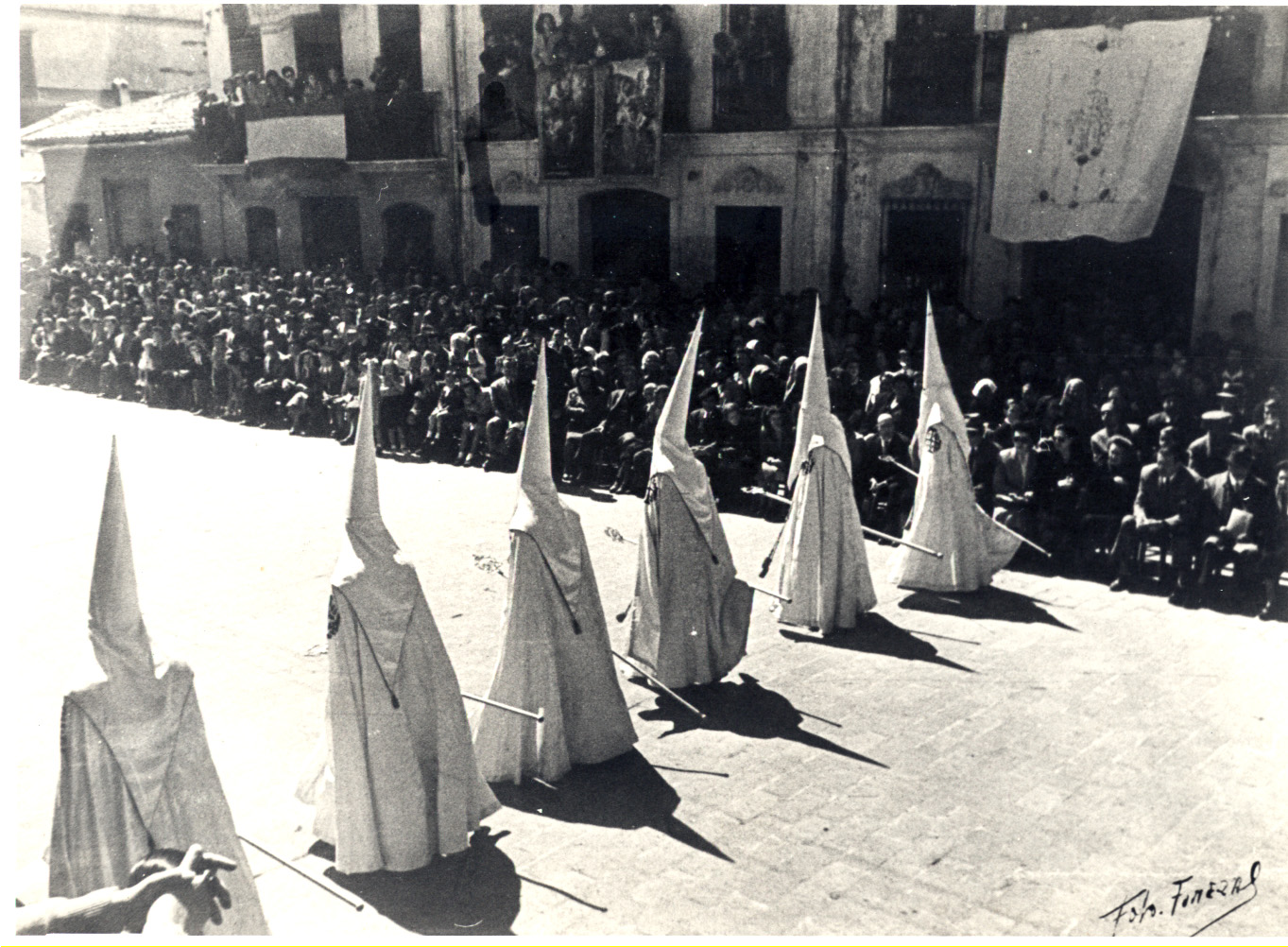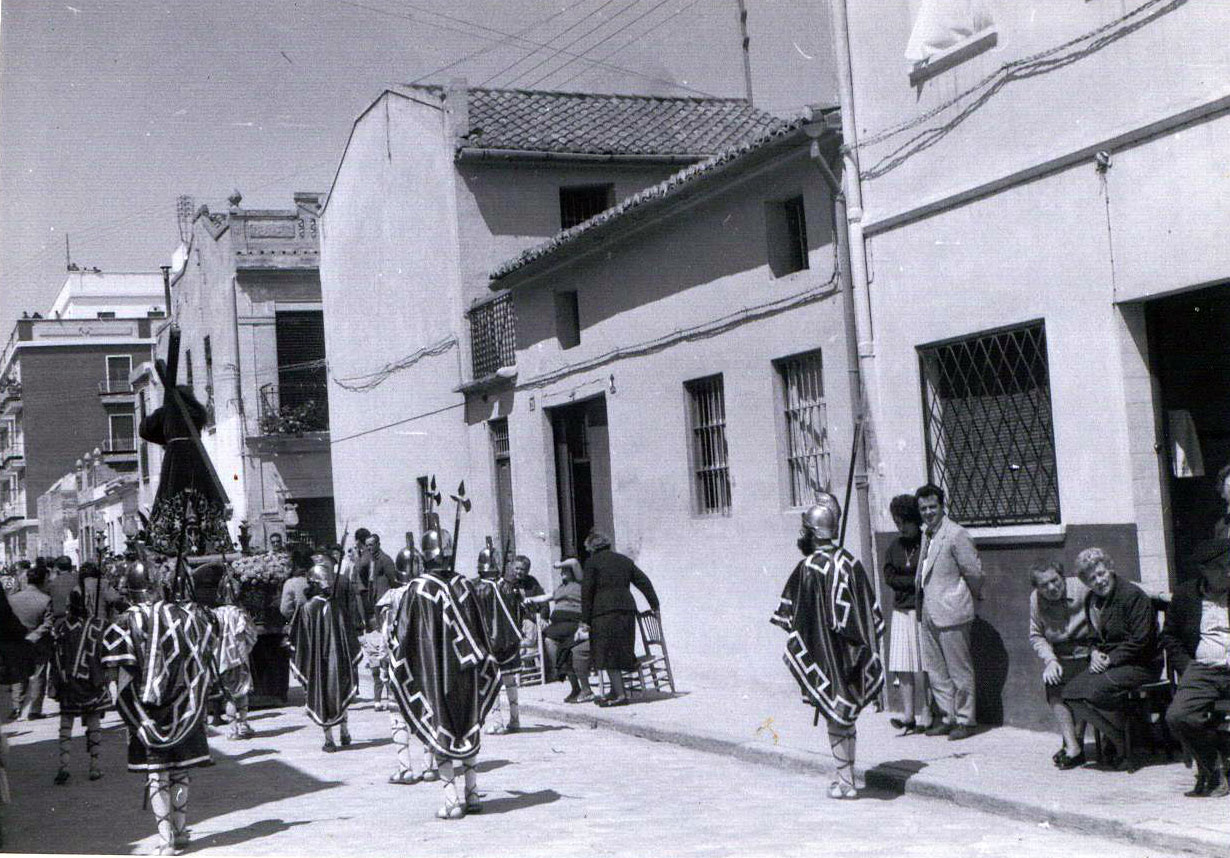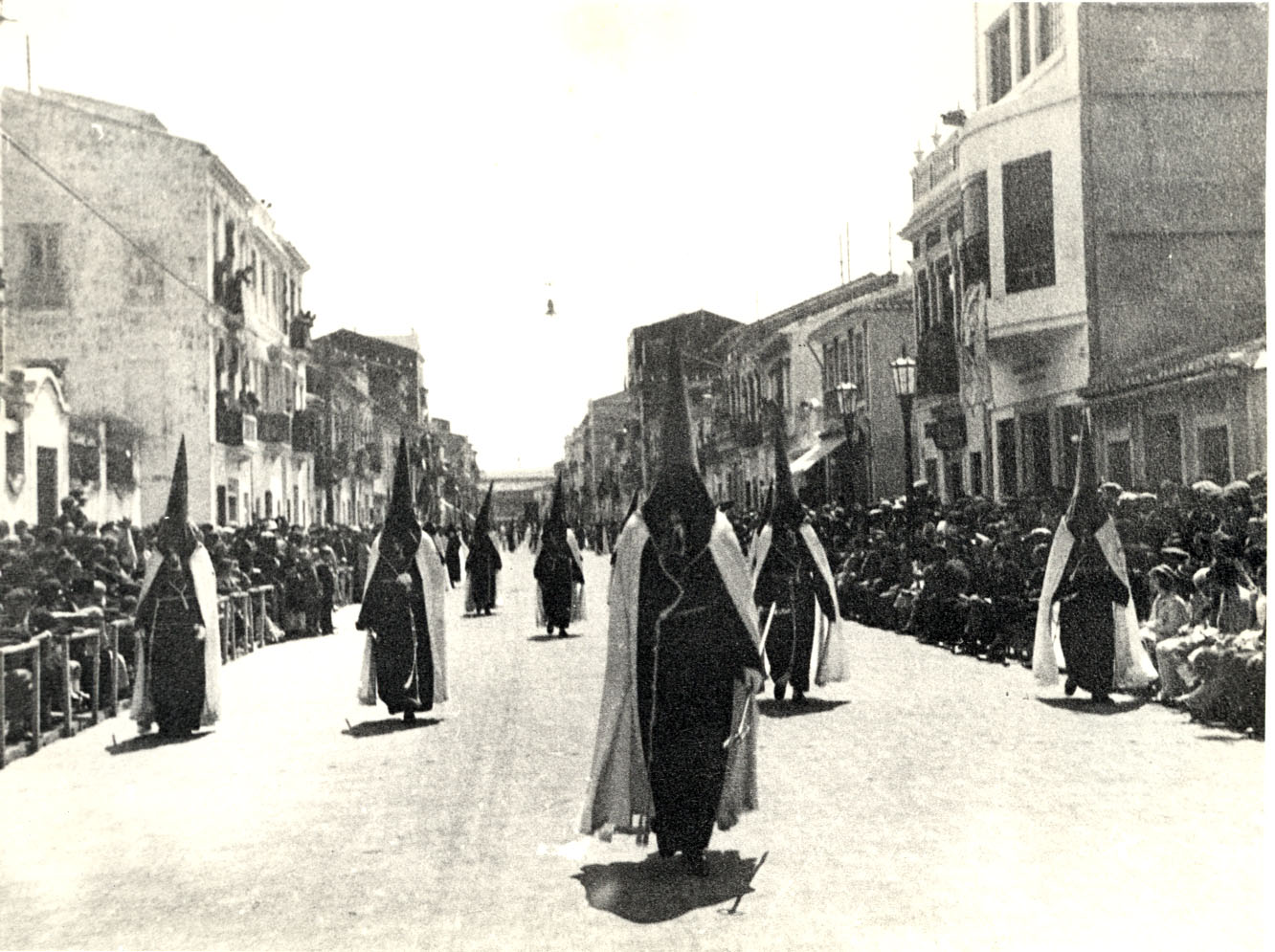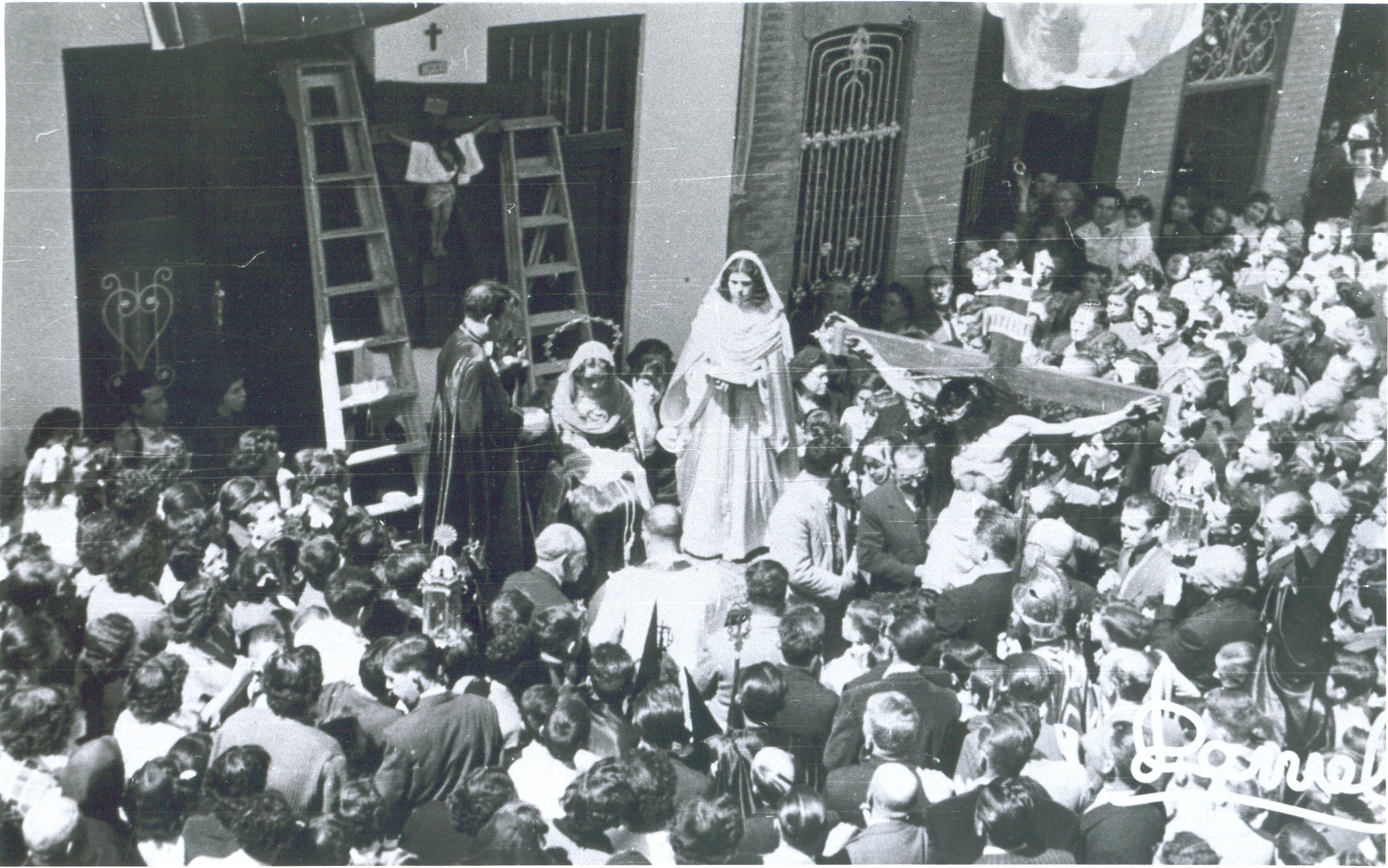Featured Dates
Highlights
1735. First written document that speaks of Holy Week processions in Santa María del Mar.
1792. Foundation in El Grao of a Concord of Jesus of Nazareth.
1847. Article by Basilio Sebastián Castellano de Losada, where the previous date is mentioned.
1851. Erection of the parishes of Our Lady of the Rosary and Our Lady of the Angels, and beginning of brotherhoods in Canyamelar and Cabanyal, respectively.
1924. Foundation of the Hermandad de la Santa Faz, in the parish of Ntra.Sra. del Rosario, with the participation of the trono-anda of the Paso de la Verónica, which breaks with the traditional trilogy of Nazarenos, Cristos y Dolorosas (Nazarenes, Christs and Sorrows).
1925/1928. Creation of the Central Committee of Festivals
1928. First official book of the Semana Santa Marinera (Marinera Holy Week)
1929. First official poster of the Semana Santa Marinera (Marinera Holy Week)
1929. First procession Visit of the Monuments
1929. First Resurrection Parade
1930. First procession of the Holy Burial
1932. Suppression of processions
1940. The reorganization of the processions begins
1942. Erection of the new parish of San Rafael Arcángel.
1942. The processions for an epidemic of exanthematic typhus are forbidden.
1944. Consolidation of the processions
1956. The Brotherhoods belonging to the parishioners of Santa María del Mar cease to participate in the processions.
1966. The Longinese Corporation processions with the costumes of the film “The Fall of the Roman Empire”.
1983. Celebration of the I Congreso de la Semana Santa Marinera where the incorporation of women as penitents is approved.
1988. Celebration of the II Congress of the Semana Santa Marinera. Reincorporation of the brotherhoods attached to the Parish Council of Santa María del Mar.
1993. Celebration of the III Congress of the Semana Santa Marinera. Modification of the itineraries of the collective acts, happening of the street of the Barraca to that of the Queen.
1995. Exhibition at the Ateneo Mercantil de València.
1997. Exhibition “The face of the Semana Santa Marinera” in the Reales Atarazanas.
2000. Celebration in Valencia of the XIII National Meeting of Confraternities
2001. Inauguration of the Museo de la Semana Santa Marinera de València “Salvador Caurin”.
2010. Exhibition “Creences vora la Mar. La Setmana Santa Marinera de València”, at the Museu Valencià d’Etnologia.
2011. The Ministry of Industry, Trade and Tourism declares València’s Semana Santa Marinera “Fiesta of National Tourist Interest”.
2016. València Town Council awards the city’s Gold Medal to València’s Semana Santa Marinera.
History
First signs
The first written news that we have about the processions that commemorated Easter in seafaring Valencia date back to the beginning of the 18th century, in El Grao, where undocumented news goes back to the time of San Vicente Ferrer, in the 15th century.
Since then, when spring approaches, the neighbours of Grao, Canyamelar and Cabanyal get ready to celebrate their big feast in their parishes, in their streets and in their houses, in which they will relive the moments of the passion, death and resurrection of Jesus Christ, through a busy programme of events that includes a manifestation of popular religiosity that surprises the numerous public that comes to contemplate it.
Initially, the images that participated in the processions represented the Nazarene, the Christ and his Sorrowful Mother . This trilogy of images represents the clearest manifestation of the relationship of the Semana Santa Marinera with the sea.
Initially the images that participated in the processions represented the Nazarene, the Christ and his Sorrowful Mother. This trilogy of images represents the clearest manifestation of the relationship of the Semana Santa Marinera with the sea.
In the suffering of the Nazarene, carrying the cross on the way to Calvary, the sailors were represented when on their boat they withstand the onslaught of storms. The Dolorosa captured the pain of women waiting for news of their husbands who know in the middle of a storm. And the Christ showing the image of the most painful and cruel death, nailed to the cross, to whom they entrust themselves, praying for the relatives drowned in the sea.
The presence of these three images in the processions was complemented by the participation of biblical characters , represented by the members of the confraternities who remembered the faithful, and continue to do so today, some of the last moments that Christ lived on earth. Especially moving are the Way of the Cross on Good Friday morning, the encounters with his Mother, with the Veronica woman who wipes the sweat from his face, or the moment of Jesus’ descent from the cross.
Marine Holy Week in the twentieth century
It was not until the first quarter of the 20th century that new brotherhoods appeared with new sculptural groups representing other moments of the passion and death of Jesus. For this reason, the organizers of the party decided to organize three processions in which all the collectives of the party participate together.
In the first quarter of the 20th century, new brotherhoods appeared and the organization of three processions in which all the collectives of the festival participate together is initiated.
In the evening of Thursday, the Visit to the Monuments in which the brotherhoods visit the parishes, accompanied only by the deaf rumor of the drums. On the night of Holy Friday, the Holy Burial when all the collectives with their respective images, beautifully illuminated and adorned with flowers, compose a true plastic catechesis and, at the midday of Easter Sunday, the Resurrection Parade, which offers a cheerful and colorful final touch to the celebrations.
Three collective acts that take place in the streets of the parishioners of the churches of Santa María del Mar; Nuestra Señora del Rosario; Cristo Redentor-San Rafael and Nuestra Señora de los Ángeles. They also host the various processions that begin on Friday of Sorrows and end on Easter Sunday.
Contemplating the different processions, the visitor who comes for the first time will be struck by the repetition of images. This is a historical reminiscence that reminds us of when the Maritime was divided into the three population centres already mentioned: Grao; Canyamelar and Cabanyal, each with its own church and, of course, with its own processions.
Holy Week returns every year to the seafaring València, hand in hand with spring. Then, the Maritime one rejuvenates again. Its people and its history are again present in the streets. An invisible force resurfaces everywhere, encouraging the neighbours of this village, born anchored in the sea, to prepare themselves to relive a legacy handed down from generation to generation.





